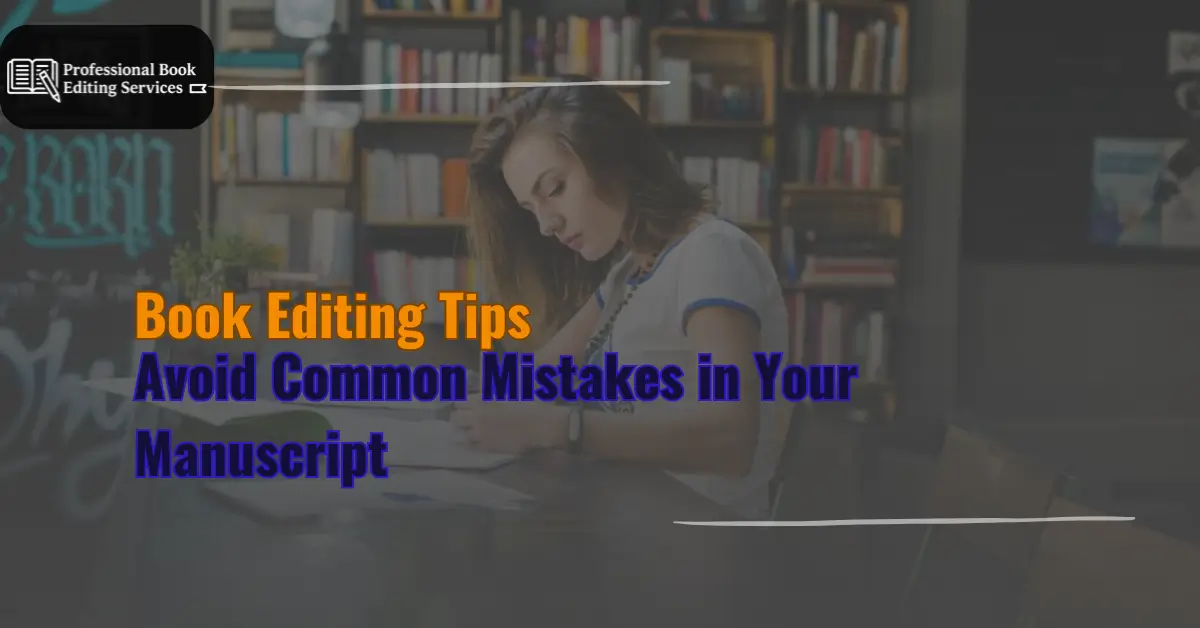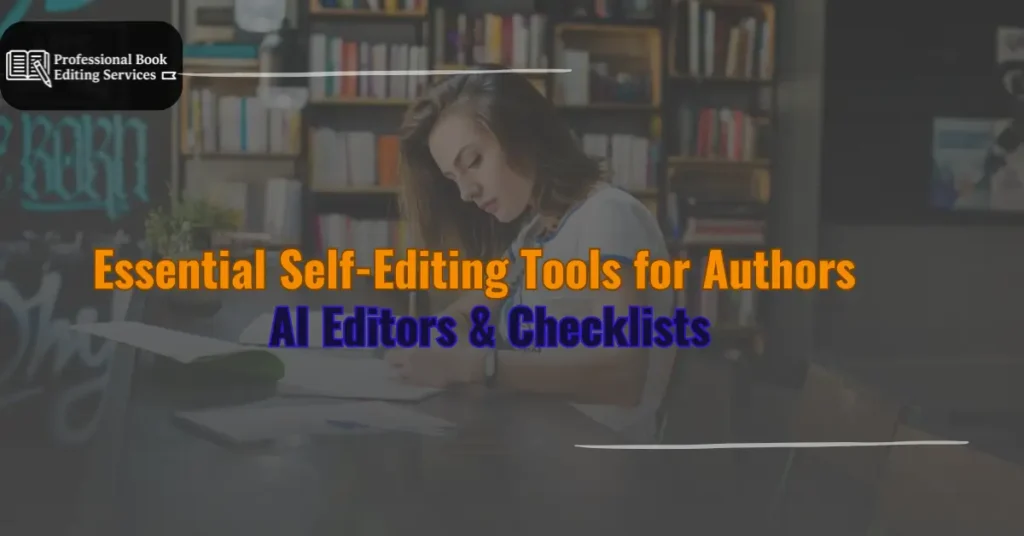Are you ready to turn your manuscript into a masterpiece? Whether you’re a first-time author or an experienced writer, mastering the art of book editing is crucial to your success. In this comprehensive guide, you’ll discover professional book editing tips that will elevate your writing, answer all your burning questions—like What is book editing?, How does book editing work?, What are the types of book editing?, How much does book editing cost?, and even How to get into book editing. Let’s dive in and transform your book from good to unforgettable.
What is Book Editing?
At its core, book editing is the process of refining and improving a manuscript to ensure it’s clear, cohesive, error-free, and engaging. But what is book editing really? It’s more than just correcting typos. Book editing involves a thorough review of your manuscripts structure, content, language, and style to make sure your story shines and your message resonates with readers.
Book editing can be broken down into several stages, each with a specific focus. From big-picture story elements to the tiniest grammatical errors, editing is what transforms your draft into a publishable book.
Key Takeaway: Book editing is the essential process of reviewing and improving a manuscript, covering everything from structure and flow to grammar and punctuation.
Why is Book Editing Important?
You might wonder: Why should I invest time and money in editing my book? The answer is simple—editing is what separates amateur writing from professional-quality books. Here’s why book editing is non-negotiable:
- First Impressions Matter: Readers and publishers judge your book by its polish and professionalism.
- Clarity and Flow: Editing ensures your ideas are communicated clearly, and your narrative flows smoothly.
- Credibility: A well-edited book builds trust with your audience.
- Marketability: Professionally edited books have a better chance of getting published and selling well.
- Error Elimination: Even the best writers make mistakes. Editing catches what you miss.
Pro Tip: Never skip editing. Even bestselling authors rely on editors to refine their work.
Types of Book Editing Explained
Understanding the types of book editing is crucial. Each stage addresses different aspects of your manuscript. Let’s break them down:
1. Developmental Editing (Structural or Substantive Editing)
Developmental editing is the first and most in-depth stage. It focuses on the big picture:
- Plot structure
- Character development
- Pacing
- Theme and tone
- Consistency and logic
A developmental editor helps you identify plot holes, flat characters, or pacing issues. They’ll suggest major changes to improve your story’s foundation.
Who needs it?
All authors, especially those working on their first drafts or complex stories.
2. Line Editing
Line editing zooms in on the language and style at the sentence and paragraph level. It ensures your writing is clear, engaging, and well-paced. A line editor will:
- Enhance sentence flow
- Improve word choice
- Clarify meaning
- Remove redundancy
- Strengthen voice and tone
Who needs it?
Writers looking to polish their prose and elevate their writing style.
3. Copy Editing
Copy editing is about correctness and consistency. A copy editor will:
- Correct grammar, punctuation, and spelling
- Check for consistency in tense, names, and facts
- Ensure adherence to style guides (like Chicago Manual of Style)
Who needs it?
Every author before publication, to ensure their work is error-free and professional.
4. Proofreading
Proofreading is the final polish before publication. A proofreader catches:
- Typos
- Formatting errors
- Minor inconsistencies
Who needs it?
Every author, even after previous editing stages.
Summary Table: Types of Book Editing
| Editing Type | Focus Area | When to Use |
|---|---|---|
| Developmental | Structure, plot, characters | Early drafts |
| Line Editing | Language, style, flow | After structure |
| Copy Editing | Grammar, consistency, accuracy | Pre-publication |
| Proofreading | Typos, formatting | Final stage |
Step-by-Step Book Editing Process
How does book editing work, step by step? Here’s a proven workflow you can follow:
- Take a Break: After finishing your draft, step away for a few days or weeks. This helps you return with fresh eyes.
- Self-Edit: Read your manuscript and make initial changes. Look for plot holes, awkward sentences, and inconsistencies.
- Developmental Edit: Work with a developmental editor or use beta readers for big-picture feedback.
- Revise: Implement changes based on feedback.
- Line Edit: Focus on sentence structure, word choice, and style.
- Copy Edit: Correct grammar, punctuation, and factual errors.
- Proofread: Do a final check for typos and formatting issues.
- Final Review: Read your manuscript one last time before sending it to agents, publishers, or self-publishing.
Pro Tip: Don’t try to do all editing stages at once. Tackle each stage separately for best results.
Essential Book Editing Tips for Writers
Ready to start editing? These book editing tips will help you polish your manuscript like a pro.
1. Read Aloud
Reading your manuscript aloud helps you catch awkward phrasing, run-on sentences, and unnatural dialogue. Your ears will pick up issues your eyes might miss.
2. Use Editing Tools (But Don’t Rely on Them)
Software like Grammarly, ProWritingAid, or Hemingway Editor can catch basic errors and suggest improvements. However, they’re no substitute for a human editor.
3. Cut the Clutter
Be ruthless. Remove unnecessary words, sentences, or scenes that don’t serve the story. Every word should earn its place.
4. Watch for Common Mistakes
Look out for:
- Repetitive words or phrases
- Overuse of adverbs (e.g., quickly, suddenly)
- Passive voice
- Inconsistent character names or traits
5. Check for Consistency
Make sure your character names, settings, and timelines are consistent throughout the book. Create a style sheet to track details.
6. Focus on Dialogue
Dialogue should sound natural and reveal character. Cut any dialogue that feels forced or doesn’t move the story forward.
7. Get Feedback
Share your manuscript with beta readers or critique partners for honest feedback.
8. Take Breaks
Editing fatigue is real. Take regular breaks to maintain focus and spot mistakes.
9. Print It Out
Editing on paper can reveal errors you missed on screen.
10. Hire a Professional
No matter how skilled you are, a professional editor brings objectivity and expertise you can’t replicate.
How Does Book Editing Work?
If you’re wondering how does book editing work, here’s a detailed look at the process:
1. Manuscript Submission
You send your manuscript to an editor (or editing service). You’ll discuss your goals, target audience, and any specific concerns.
2. Editorial Assessment
The editor reviews your manuscript and provides an overview of its strengths and weaknesses. They’ll recommend the type(s) of editing needed.
3. Editing Stages
Depending on your needs, the editor will perform developmental, line, copy editing, or proofreading. You’ll receive an edited manuscript with comments and suggestions.
4. Author Revisions
You review the editor’s feedback and make revisions. This may involve several rounds of back-and-forth.
5. Final Proofreading
After all major changes, a proofreader checks for last-minute errors.
6. Approval and Publication
Once you’re happy with the final manuscript, you’re ready to publish!
Pro Tip: Clear communication with your editor is key to a successful editing process.
How to Get Into Book Editing: A Guide for Aspiring Editors
Interested in a career in editing? Here’s how to get into book editing and build a rewarding career:
1. Develop Strong Language Skills
A deep understanding of grammar, syntax, and style is essential. Read widely and study editing guides.
2. Get Qualified
Consider a degree in English, journalism, or communications. Many editors also complete editing courses or certifications from organizations like the Editorial Freelancers Association.
3. Build Experience
Start by editing for friends, student publications, or volunteering for small presses. Build a portfolio of edited work.
4. Specialize
Choose a niche (e.g., fiction, non-fiction, academic) to stand out in the market.
5. Network
Join professional organizations and attend conferences. Connect with authors, publishers, and other editors.
6. Market Yourself
Create a website showcasing your services, testimonials, and portfolio. Use social media to reach potential clients.
7. Stay Updated
Follow industry trends, style guides, and new editing tools.
Resources:
- Editorial Freelancers Association (EFA)
- ACES: The Society for Editing
- Chartered Institute of Editing and Proofreading (CIEP)
How Much Does Book Editing Cost?
One of the most common questions is how much does book editing cost? The answer depends on several factors:
- Type of Editing: Developmental editing is the most expensive; proofreading is the least.
- Word Count: Longer manuscripts cost more.
- Editor Experience: Established editors charge higher rates.
- Turnaround Time: Rush jobs may cost extra.
Average Costs (USD):
| Editing Type | Cost per Word | Cost per Page (250 words) | Cost for 80,000-word Novel |
|---|---|---|---|
| Development | $0.03 – $0.08 | $7.50 – $20 | $2,400 – $6,400 |
| Line Editing | $0.02 – $0.05 | $5 – $12.50 | $1,600 – $4,000 |
| Copy Editing | $0.01 – $0.03 | $5 – $12.50 | $1,600 – $4,000 |
| Proofreading | $0.005 – $0.015 | $1.25 – $3.75 | $400 – $1,200 |
Pro Tip: Always request a sample edit and a clear quote before hiring an editor.
DIY Book Editing vs. Hiring a Professional Editor
Should you edit your book yourself or hire a professional? Here’s a comparison:
DIY Book Editing
Pros:
- Cost-effective
- Full creative control
- Develops your editing skills
Cons:
- Hard to spot your own mistakes
- May lack professional polish
- Time-consuming
Hiring a Professional Editor
Pros:
- Objective, expert feedback
- Industry knowledge
- Higher quality and credibility
Cons:
- Costly
- Requires trust and collaboration
Best Practice: Do as much self-editing as you can, then invest in a professional editor for the best results.
Conclusion
Editing is the secret weapon behind every successful book. By understanding what is book editing, the types of book editing, and following expert book editing tips, you can turn your manuscript into a book reader will love. Whether your self-edit or hire a professional, the right approach absolutely makes all the difference. Remember, editing is not just about fixing mistakes—it’s about elevating your story, sharpening your voice, and ensuring your message lands with impact.
Ready to Edit Your Book?
If you’re looking for professional book editing services contact us today for a free consultation and sample edit. Let’s make your book the best it can be!
Frequently Asked Questions
Q: What is the difference between line editing and copy editing?
A: Line editing improves style, flow, and clarity at the sentence level. Copy editing focuses on grammar, punctuation, and factual accuracy.
Q: How long does book editing take?
A: It depends on the manuscript’s length and complexity. Each editing stage can take from a few days to several weeks.
Q: Can I skip developmental editing if my story is solid?
A: It’s not recommended. Even strong stories benefit from a professional review for structure and pacing.
Q: What if I can’t afford a professional editor?
A: Use beta readers, writing groups, and editing software. But remember, professional editing is an investment in your book’s success.
Q: How do I find a reputable book editor?
A: Look for editors with experience in your genre, positive testimonials, and professional memberships. Ask for a sample edit.





